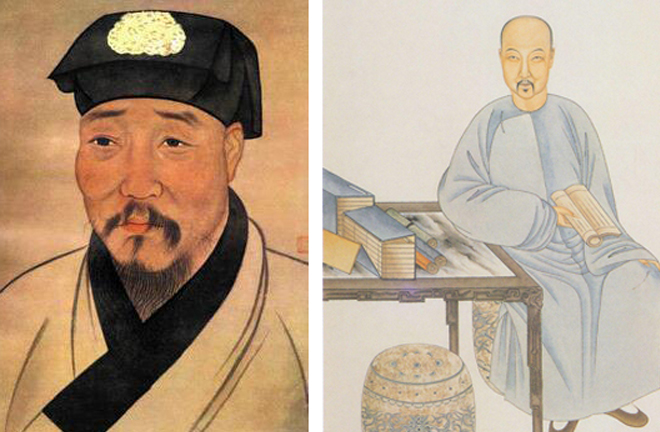Field studying Ming and Qing literature still growing fast

Poets of Ming and Qing dynasties such as Xu Wei (left) and Nalan Xingde (right) and their works have gained increasing attention from academic circles. Photo: BAIDU BAIKE
Since the 20th century, with the influence of Western literature, the study of literature in the Ming and Qing dynasties (1368–1911) has focused more on works of drama and novels. With the constant excavation and arrangement of historical materials from the Ming and Qing eras, the study of poems and essays of each era has gained increasing attention from academic circles. At the International Symposium on Ming and Qing Poems and Essays Nov. 2–3 in Nanjing, scholars conducted in-depth discussions on how Ming and Qing poems and essays changed with the times, the research of Ming and Qing stylistics, and the arrangement of literary documents of each era.
Over the past 30 years, the arrangement and study of Ming and Qing literature has become one of the fastest growing fields in the study of ancient Chinese literature. Xu Xingwu, dean of the School of Liberal Arts at Nanjing University, said that it was during the Ming and Qing eras that traditional Chinese culture matured. The philosophy of mind of the Ming Dynasty deepened traditional culture and its humanistic qualities; scholars of the Qing Dynasty were synthesizers of classical academic study.
Liu Yuejin, director of the Institute of Literature at the Chinese Academy of Social Sciences, said that since the founding of the People’s Republic of China in 1949, great progress has been made in the research of ancient literature. The study of Ming and Qing popular literature created outstanding academic achievements during the years from 1919 to 1949, and the discovery of the value of Ming and Qing poems and essays could be taken as another new achievement after 1949. Especially since the reform and opening up, the study of Ming and Qing poems and essays has accelerated in its development. The collecting and selecting of basic literature, the numerous academic achievements, the establishment of major projects, and the cultivation of talent provided a powerful impetus for the study of ancient literature.
The symposium is themed “Returning to Classics and Coming to New Reflections.” Xu said that “returning to classics” refers to a return to the Chinese literary tradition with poems and essays as the mainstream focus; “coming to new reflections” alludes to studying the classics from new perspectives such as regional history and art history.
Xu Yanping, a professor from the School of Liberal Arts at Nanjing University, said that Ming and Qing literature was characterized by the daily creation of poems and essays, the prosperity of local literature, the rise of female writers, and the erudition of writers. In the past, literature of the Ming and Qing eras was studied under the research frameworks relating to literature of the Tang (618–907) and Song (960–1279) eras. It is necessary to return to the context of Ming and Qing literature to understand each of their uniqueness.
Zuo Dongling, a professor from the School of Literature at Capital Normal University, said that the alternation of dynasties provides good perspectives to study the history of literary thought, literary creation, and history of literary criticism. Take the taige and shanlin poetic styles as an example. The taige style was represented by officials in the Cabinet and the Imperial Academy of the Ming Dynasty, while the shanlin style was preferred by poets in seclusion. The two styles coexisted in the literary circles of the Yuan Dynasty (1271–1368). By contrast, in the Ming Dynasty, the shanlin poems were gradually despised, whilst the taige poems were considered magnificent.
Scholars at the symposium suggested that the study of Ming and Qing poems and essays should avoid academic problems such as fragmentation, simplification and theoretical impracticality. We should focus on important writers, works, literary phenomena and theories, and discover literary and social values from both macro and micro perspectives.
Yim Chi Hung Lawrence, a professor from the Department of Chinese Language and Literature at the Chinese University of Hong Kong, said that the poems and essays of the Ming and Qing eras contain the rich connotations of a social and regional nature. Works by authors and the links those works have to each other can help analysts discover the relationships between authors and their works. We also should pay attention to the relationships that exist between the author’s social experience and work. In addition, we should understand the status of the author in the context of the overall historical environment.
edited by YANG LANLAN
